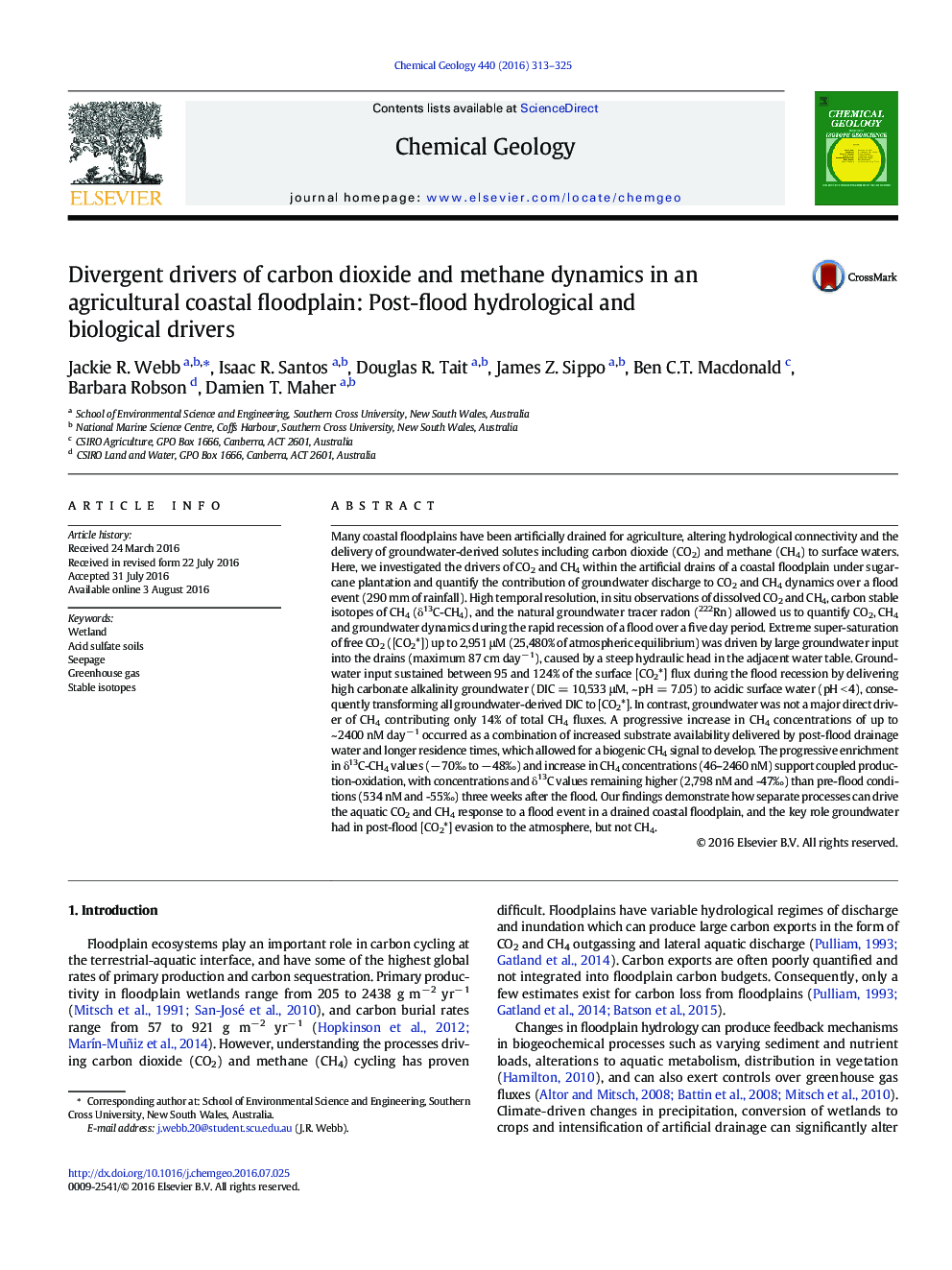| Article ID | Journal | Published Year | Pages | File Type |
|---|---|---|---|---|
| 6436049 | Chemical Geology | 2016 | 13 Pages |
â¢Opposing response of dissolved CO2 and CH4 concentrations post-flood.â¢Post-flood peaks of 2950 μM for CO2 and 2400 nM for CH4.â¢Groundwater discharge sustained CO2 evasion via acidification of DIC.â¢Post-flood conditions enhanced diel oscillations in CH4.â¢Drainage canals were a significant source of CO2 and CH4 following a flood.
Many coastal floodplains have been artificially drained for agriculture, altering hydrological connectivity and the delivery of groundwater-derived solutes including carbon dioxide (CO2) and methane (CH4) to surface waters. Here, we investigated the drivers of CO2 and CH4 within the artificial drains of a coastal floodplain under sugarcane plantation and quantify the contribution of groundwater discharge to CO2 and CH4 dynamics over a flood event (290 mm of rainfall). High temporal resolution, in situ observations of dissolved CO2 and CH4, carbon stable isotopes of CH4 (δ13C-CH4), and the natural groundwater tracer radon (222Rn) allowed us to quantify CO2, CH4 and groundwater dynamics during the rapid recession of a flood over a five day period. Extreme super-saturation of free CO2 ([CO2*]) up to 2,951 μM (25,480% of atmospheric equilibrium) was driven by large groundwater input into the drains (maximum 87 cm dayâ 1), caused by a steep hydraulic head in the adjacent water table. Groundwater input sustained between 95 and 124% of the surface [CO2*] flux during the flood recession by delivering high carbonate alkalinity groundwater (DIC = 10,533 μM, ~ pH = 7.05) to acidic surface water (pH < 4), consequently transforming all groundwater-derived DIC to [CO2*]. In contrast, groundwater was not a major direct driver of CH4 contributing only 14% of total CH4 fluxes. A progressive increase in CH4 concentrations of up to ~ 2400 nM dayâ 1 occurred as a combination of increased substrate availability delivered by post-flood drainage water and longer residence times, which allowed for a biogenic CH4 signal to develop. The progressive enrichment in δ13C-CH4 values (â 70â° to â 48â°) and increase in CH4 concentrations (46-2460 nM) support coupled production-oxidation, with concentrations and δ13C values remaining higher (2,798 nM and -47â°) than pre-flood conditions (534 nM and -55â°) three weeks after the flood. Our findings demonstrate how separate processes can drive the aquatic CO2 and CH4 response to a flood event in a drained coastal floodplain, and the key role groundwater had in post-flood [CO2*] evasion to the atmosphere, but not CH4.
Graphical abstractDownload high-res image (198KB)Download full-size image
